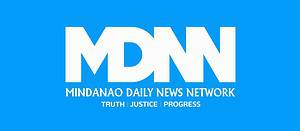By: Ray G. Talimio Jr.
The recent forecast by Leechiu Property Consultants that the Bangko Sentral ng Pilipinas (BSP) may cut interest rates by 25 basis points this April, citing the March inflation drop to 1.8%, is understandable but potentially misguided. While headline inflation appears to be easing, this does not reflect the full picture. Underneath the surface are mounting risks that may cause inflation to rebound in the coming months—risks that should give BSP reason to pause, rather than act prematurely.
Chief among these is the expected lifting of the Food Security Emergency, declared earlier to control the price surge in essential food items such as rice, meat, poultry, and eggs. That emergency declaration brought temporary relief—price ceilings, government stockpiling, import acceleration, and increased subsidies—but it did not solve the structural problems plaguing our agriculture and food logistics sectors. These include poor distribution networks, cartel-like behavior in rice and meat trading, dependence on imports, and insufficient government support for small producers. With the emergency about to be lifted, market forces that were previously restrained will soon be unleashed. Rice traders and exporters, many of whom were forced to absorb losses due to price controls, are now eager to regain their margins. That means a likely spike in prices once ceilings are removed, compounded by speculative hoarding and artificial scarcity—a practice that has historically triggered sudden food price surges in the Philippines.
Let’s recall what the market looked like before the Food Security Emergency was declared. Rice prices had already surged by 15–20% year-on-year due to a convergence of El Niño-induced production shortfalls, global supply constraints, and manipulation in the domestic supply chain. Meat prices remained elevated due to the lingering impact of African Swine Fever and high input costs. Poultry and egg prices were skyrocketing due to supply constraints and rising feed prices. Eggs alone had registered a 30% year-on-year price increase in late 2024, largely driven by demand and disease-driven supply shocks. These trends were only arrested—not reversed—by the emergency declaration. Once lifted, we can expect prices to bounce back, possibly even overshooting prior levels due to pent-up margin recovery efforts by market players. Rice prices could climb by another 10–15% within 2–3 months of the lifting, pulling up the overall food inflation trajectory.
To complicate matters further, we are entering the traditional election spending period. Historically, election cycles in the Philippines are accompanied by massive government disbursements—on infrastructure, local projects, aid distribution, and even one-off incentives—that inject liquidity into the system. While this may boost consumption, it can also stoke inflation if supply cannot keep up with demand. In an environment where food prices are already rising, that additional demand could be enough to tip inflation back into the 3–5% territory, and possibly higher if global supply chains remain unstable.
And we haven’t even factored in external risks yet. The return of Donald Trump to the U.S. presidency, should it happen, and his aggressive push for reciprocal tariffs may trigger trade dislocations across ASEAN and its export-dependent partners. While the immediate targets are likely China, Mexico, and the EU, the spillover effects could hit Philippine exports and BPO receipts, putting pressure on the peso. A weaker peso would, in turn, make imports more expensive—including fuel, fertilizers, feeds, and food commodities. If not managed, this could become another inflationary pressure point.
In this context, a 25-basis-point rate cut by BSP this April would be ill-timed. While it may encourage borrowing and signal support for economic expansion, the gains would likely be short-lived. Once inflation rebounds due to the factors mentioned above, BSP could be forced to reverse course and hike rates later in the year—damaging its credibility and adding unnecessary volatility to markets. The better path forward would be for BSP to hold its policy rate steady this month and issue a clear dovish forward guidance. This guidance should communicate the central bank’s readiness to cut rates in Q2 or Q3, provided that food price movements stabilize, and that election-related liquidity does not spill over into excessive inflation.
Monetary easing can also be achieved through other tools, such as a calibrated reduction in the reserve requirement ratio (RRR), which can inject liquidity without signaling a full easing cycle. BSP can also engage in moral suasion to encourage banks to channel lending toward productive sectors such as agriculture, food logistics, and MSMEs. This would support economic activity where it matters most, without triggering a broad-based inflation resurgence.
At the same time, the Executive must do its part. The end of the Food Security Emergency should not mean the end of price monitoring, subsidy programs, or import coordination. The Department of Agriculture and DTI should jointly roll out a post-emergency transition plan that includes continued buffer stocking, targeted import quotas, and stricter anti-hoarding enforcement. Inflation control is not just a monetary issue; it is also about governance, logistics, and price transparency. If the BSP is to manage inflation expectations effectively, it cannot do so alone.
Inflation is like fire—it must be managed, not just extinguished temporarily. While March’s 1.8% headline figure is encouraging, it could easily be a calm before the storm. A BSP rate cut in April could add fuel to that fire if done in haste. Policymaking must be based not just on what is visible now, but what is reasonably expected to come. With food prices poised to surge, elections fueling demand, and global tariffs threatening trade stability, now is the time for caution, not complacency.
Sources: Philippine Statistics Authority (March 2025 Inflation Report); Leechiu Property Consultants via Bilyonaryo.com; Bangko Sentral ng Pilipinas Policy Statements; Department of Agriculture Bulletins; World Bank Commodity Markets Outlook Q1 2025; Peterson Institute for International Economics – Reciprocal Tariff Watch.
Disclaimer: The views expressed in this column are those of the author and do not necessarily reflect the official positions of institutions he is affiliated with.
About the Author: Ray G. Talimio Jr. is the Co-Chairman of the Economic Development Committee of the Regional Development Council-X (RDC-X), and Chairman of the MSMED Council of Misamis Oriental and Cagayan de Oro City. He also chairs the BIMP-EAGA Northern Mindanao Region. He writes this regular column “From the Sidelines” to share analysis, reforms, and reflections on public policy, governance, and economic development.




